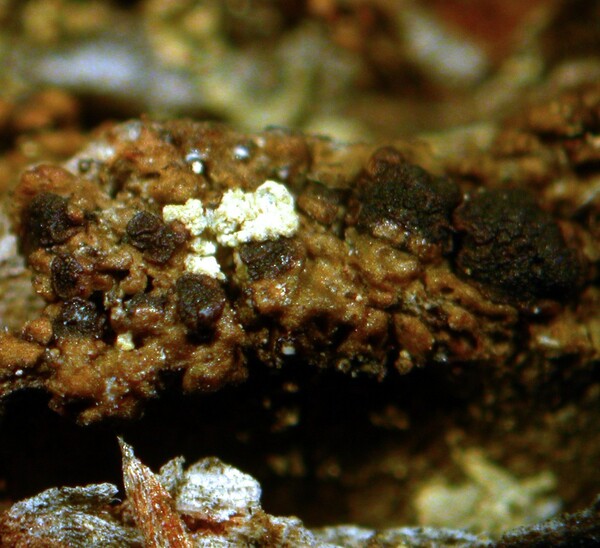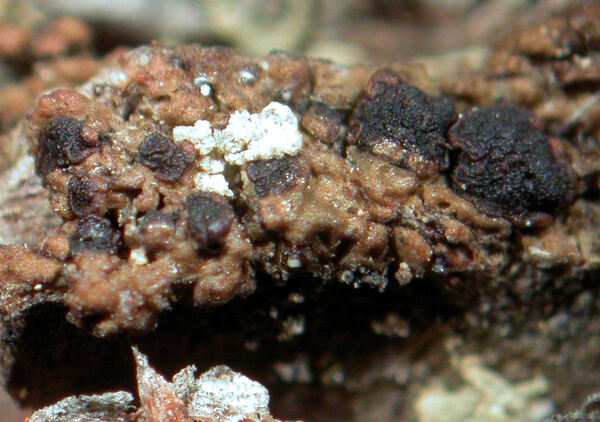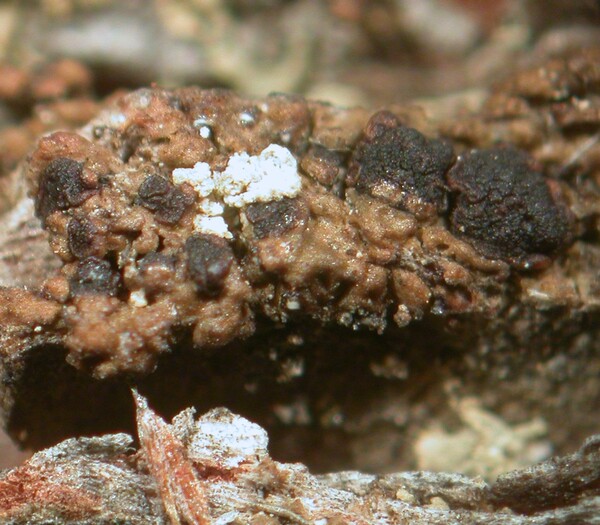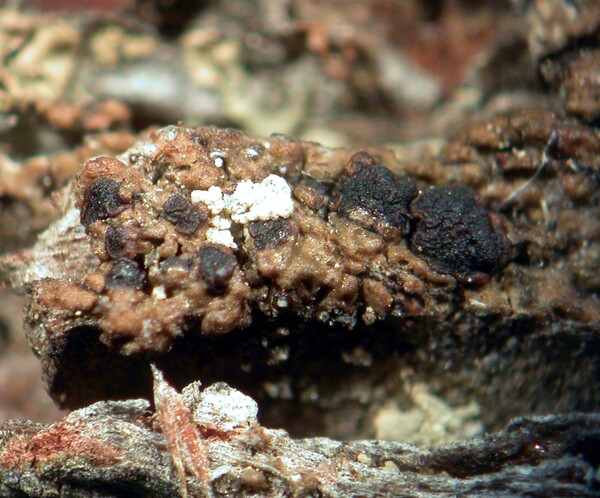Protoparmelia ochrococca (Nyl.) P.M. Jørg., Rambold & Hertel
in Hertel, Lecideaceae Exsiccatae, X, 7 (nr. 196), 1988. Basionym: Lecidea ochrococca Nyl. - Öfvers. K. Svensk. Vetensk.-Akad. Förh., 17: 297, 1860.
Synonyms:
Distribution: N - TAA (Nimis & al. 2015, Nascimbene & al. 2022). C - Sar (Zedda 2002).
Description: Thallus crustose, episubstratic, yellowish brown, chestnut brown to olive-brown in shade forms, often glossy, rather thin, of scattered to clustered, rounded, convex, (0.1-)0.2-0.5 mm wide areoles. Apothecia lecanorine, (0.3-)0.6-1.1(-1.3) mm across, adnate to sessile and strongly constricted at base, with a dark reddish brown to finally brown-black, initially flat, but often soon convex, glossy disc, and a thin, smooth or crenulate, shiny, usually soon excluded thalline margin (mature apothecia appearing lecideine). Thalline exciple eucorticate, overlain by a gelatinous layer, the medulla filled with algal cells; proper exciple thin, brown in outer part, colourless within; epithecium orange-brown; hymenium colourless to pale yellowish-brown, 30-50 µm high; hypothecium colourless, of horizontally arranged hyphae, containing photobiont cells. Asci 8-spored, clavate, approaching the Lecanora-type, with a well-developed amyloid tholus and a distinct, non-amyloid axial mass. Ascospores 1-celled, hyaline, fusiform or ellipsoid, (7-)8-12(-15) x 2-3.5(-4) µm. Pycnidia rare, immersed, dark around the ostiole. Conidia short-acicular, straight, 7-9 x c. 0.7 µm. Photobiont chlorococcoid. Spot tests: cortex and medulla K-, C-, KC-, P-, UV-. Chemistry: without lichen substances.Note: a mainly western epiphytic to lignicolous species with two known stations in Italy. It is included in the Italian red list of epiphytic lichens as “Endangered” (Nascimbene & al. 2013c).
Growth form: Crustose
Substrata: bark and lignum
Photobiont: green algae other than Trentepohlia
Reproductive strategy: mainly sexual
Most common in areas with a humid-warm climate (e.g. most of Tyrrenian Italy)
Commonnes-rarity: (info)
Alpine belt: absent
Subalpine belt: absent
Oromediterranean belt: absent
Montane belt: absent
Submediterranean belt: extremely rare
Padanian area: absent
Humid submediterranean belt: extremely rare
Humid mediterranean belt: absent
Dry mediterranean belt: absent
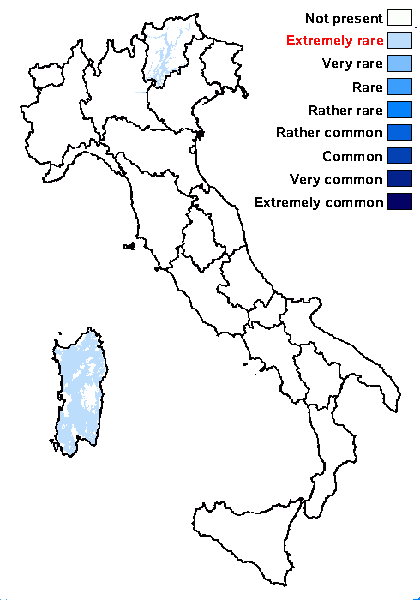
Predictive model
Herbarium samples
Growth form: Crustose
Substrata: bark and lignum
Photobiont: green algae other than Trentepohlia
Reproductive strategy: mainly sexual
Most common in areas with a humid-warm climate (e.g. most of Tyrrenian Italy)
Commonnes-rarity: (info)
Alpine belt: absent
Subalpine belt: absent
Oromediterranean belt: absent
Montane belt: absent
Submediterranean belt: extremely rare
Padanian area: absent
Humid submediterranean belt: extremely rare
Humid mediterranean belt: absent
Dry mediterranean belt: absent

Predictive model
| Herbarium samples |
 Index Fungorum
Index Fungorum
 GBIF
GBIF


